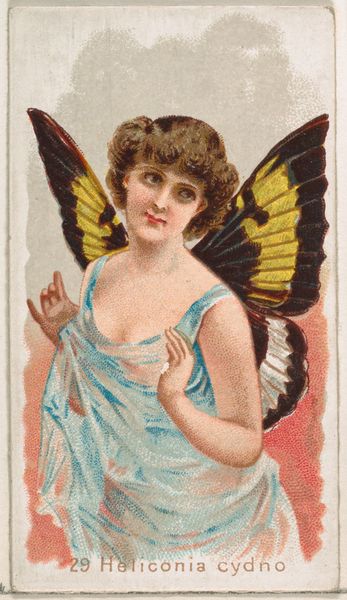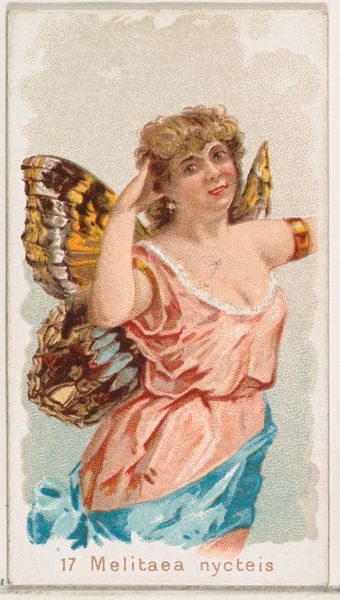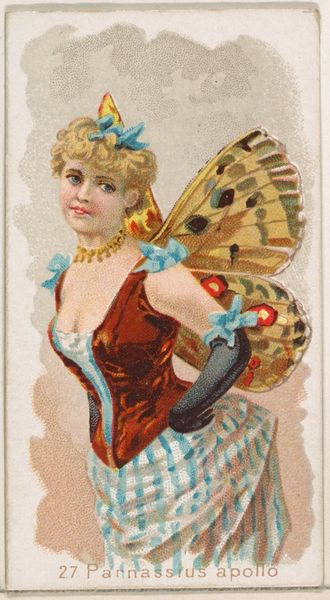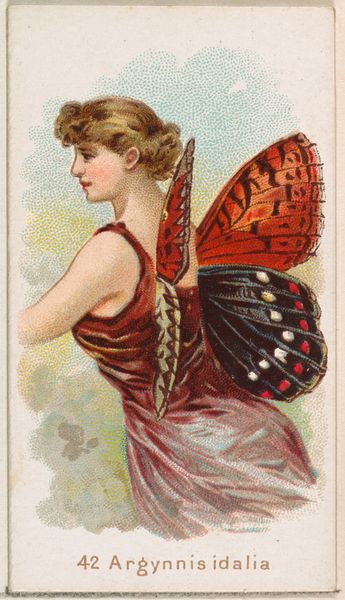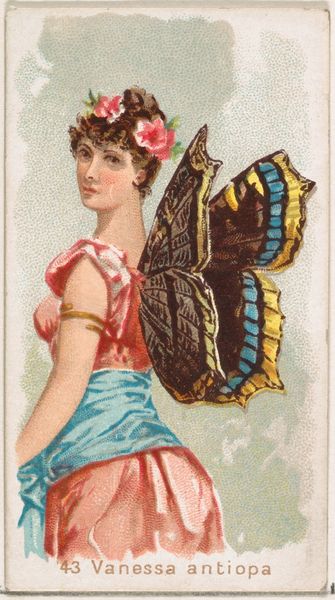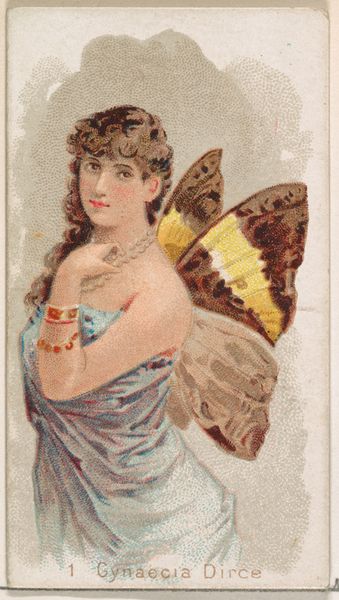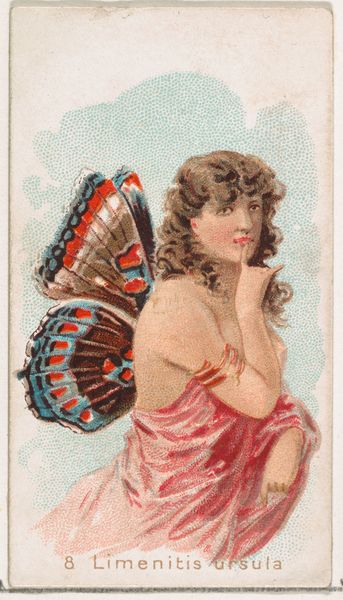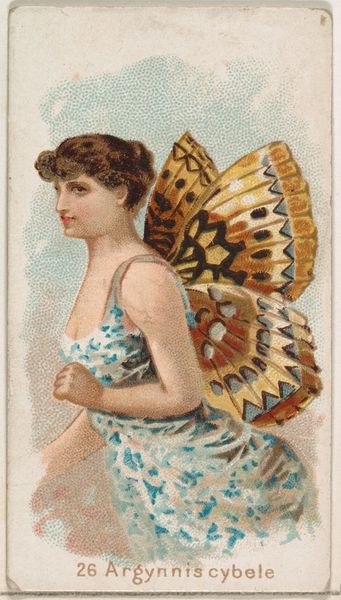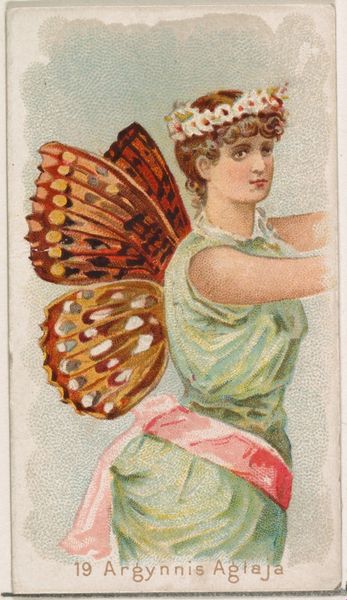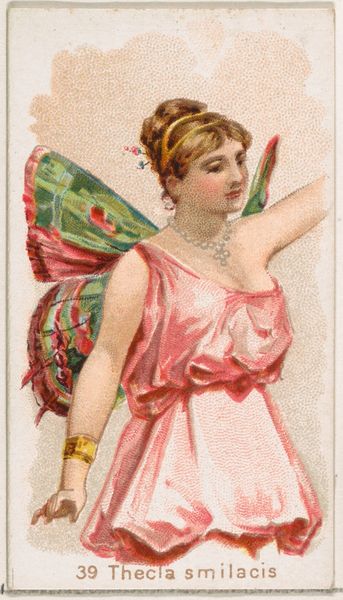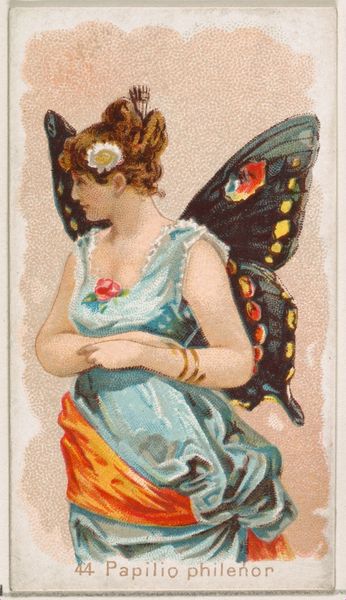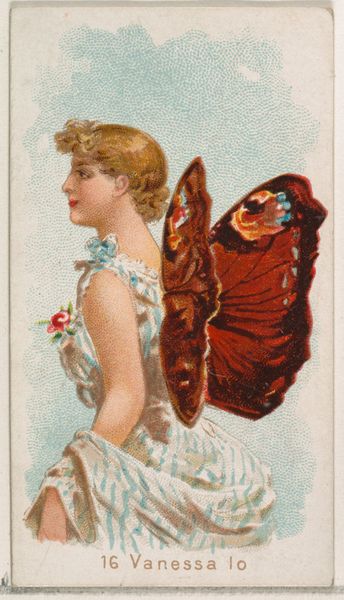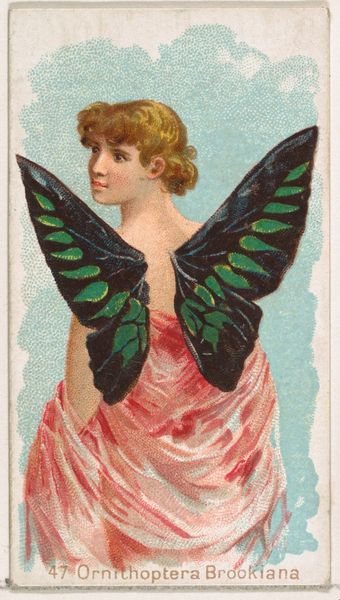
Card 28, Terias Lisa, from the Butterflies series (N183) issued by Wm. S. Kimball & Co. 1888
0:00
0:00
# print
#
portrait drawing
Dimensions: Sheet: 2 11/16 × 1 1/2 in. (6.9 × 3.8 cm)
Copyright: Public Domain
Curator: Here we have "Card 28, Terias Lisa, from the Butterflies series (N183)," created around 1888 by Wm. S. Kimball & Co. It's currently held at the Metropolitan Museum of Art. Editor: Well, it certainly captures a fleeting, almost dreamlike quality. There’s a deliberate sweetness to her gesture that I find quite engaging, especially when combined with those incredibly detailed wings. Curator: Absolutely, and to unpack that further, remember these were trade cards inserted into cigarette packs. Kimball & Co. aimed to create visually appealing collectibles. The printing process itself was key: chromolithography, which allowed for these vibrant colors and delicate details to be reproduced at scale, effectively merging mass production with artistic aspirations. Editor: The butterfly wings immediately speak to transformation and ephemerality – core concepts in art. Butterflies, in art historical symbolism, have long represented the soul and a delicate metamorphosis, but juxtaposed with this young woman’s figure it does take on a bit of playful allure. Curator: Indeed! It speaks volumes about the cultural and social context of its time. Kimball wasn’t just selling cigarettes; he was selling an aspirational lifestyle. The cards served as advertising, yes, but also as miniature artworks distributed and consumed en masse. Think of the supply chains, the artistry involved in the initial design, and then the massive industrial undertaking to get these images into the hands of the public. Editor: Right. The choice of a butterfly as a symbolic echo for a woman evokes the Victorian era’s idealization of women and their fragile beauty. Even the woman’s pose—the coy finger to her lips— invites the viewer to share in a secret, underscoring themes of feminine mystery. Curator: The flattened perspective, seen in Japanese Ukiyo-e prints, also reflects the vogue for Japonisme that gripped the West at that moment. It really pushed the boundary of how consumer objects could reflect broader artistic trends. Editor: Reflecting on this tiny print, the Terias Lisa, manages to condense concepts of beauty, fleeting moments, and the power of subtle symbolism in a rather charming package. Curator: It really makes you consider how objects considered quotidian can have intricate manufacturing process and simultaneously embed deep cultural significance.
Comments
No comments
Be the first to comment and join the conversation on the ultimate creative platform.
